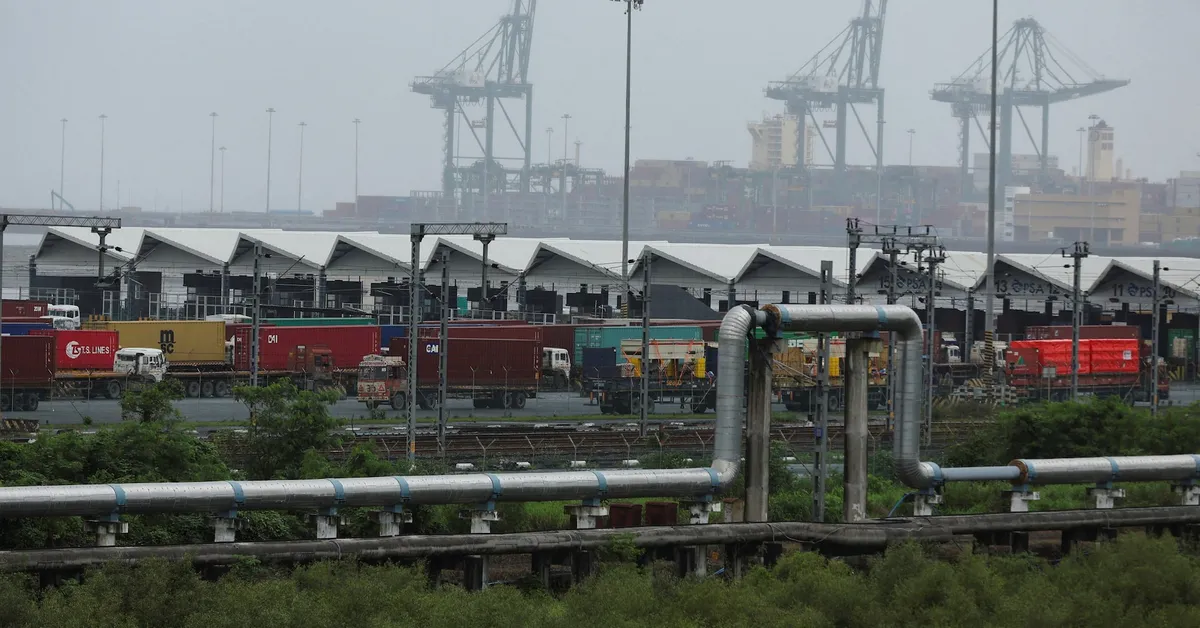
On August 27, 2023, U.S. President Donald Trump officially implemented a significant increase in tariffs on imports from India, raising them to as high as 50%. This decision marks a substantial setback for U.S.-India relations, which had evolved into a strategic partnership since the early 2000s. The new tariffs consist of a punitive 25% charge on Indian purchases of Russian oil, in addition to an existing 25% tariff on various imports from India. As a result, total duties on key goods such as garments, gems and jewelry, footwear, sporting goods, furniture, and chemicals are now among the highest imposed by the United States, rivaling those faced by Brazil and China.
The implementation of these tariffs poses a serious threat to thousands of small exporters and jobs, particularly in Prime Minister Narendra Modi's home state of Gujarat. Analysts predict that this will negatively impact growth in India's economy, currently the fastest-growing major economy globally. Although the Indian stock market did not react immediately due to a Hindu festival, equity benchmarks experienced their worst performance in three months the day prior, following confirmation of the new tariffs. Furthermore, the Indian rupee has been on a downward trend, hitting its lowest level in three weeks.
Despite the potential for economic disruption, some analysts believe that there may still be room for optimism. If New Delhi can implement further economic reforms and adopt a less protectionist approach, it could mitigate the adverse effects of the tariffs while simultaneously working to resolve tensions with Washington. According to an anonymous official from India's Commerce Ministry, exporters affected by the tariffs are expected to receive financial assistance and guidance to diversify their markets to include regions such as China, Latin America, and the Middle East.
Notably, certain goods such as steel, aluminum, passenger vehicles, and copper are exempt from these new tariffs, as they are subject to separate duties under the Section 232 national security trade law. Indian officials have stated that the average tariff on U.S. imports is around 7.5%, while the U.S. Trade Representative's office has cited tariffs as high as 100% on automobiles and an average applied rate of 39% on U.S. agricultural products.
The timing of the tariff increase follows five rounds of unsuccessful negotiations, during which Indian officials had expressed hope that the U.S. would limit the tariffs to 15%, a rate afforded to other major trading partners like Japan and South Korea. Both sides have attributed the breakdown in talks to political miscalculations and miscommunications. In 2024, bilateral trade between the two nations reached $129 billion, with the U.S. facing a trade deficit of $45.8 billion.
Exporters across India estimate that these tariffs could impact nearly 55% of the nation's $87 billion merchandise exports to the United States. Competitors like Vietnam, Bangladesh, and China stand to benefit from India's loss of competitive edge. Rajeswari Sengupta, an economics professor at the Indira Gandhi Institute of Development Research, suggests that a depreciating rupee could provide indirect support to exporters by regaining lost competitiveness. She advocates for a more trade-oriented, less protectionist strategy to stimulate demand.
As the situation unfolds, S.C. Ralhan, president of the Federation of Indian Export Organisations, recommends considering a one-year moratorium on bank loans for impacted exporters, in addition to extending low-cost credit and improving access to loans. Sustained tariffs at these levels could undermine India's attractiveness as an alternative manufacturing hub to China, potentially threatening up to 2 million jobs in the short term. However, Sujan Hajra, chief economist at Anand Rathi Group, asserts that India's diversified export base, stable corporate earnings, and robust domestic demand may help cushion the economic impact.
The current trade tensions have raised questions about the future of U.S.-India relations, especially given their shared security concerns regarding China. However, both nations recently issued statements reaffirming their commitment to enhancing bilateral ties and cooperation through the Quad partnership, which includes Australia and Japan.
In conclusion, while the newly imposed tariffs represent a significant challenge for India's economy and exporters, proactive measures and reforms could pave the way for recovery and sustained growth.